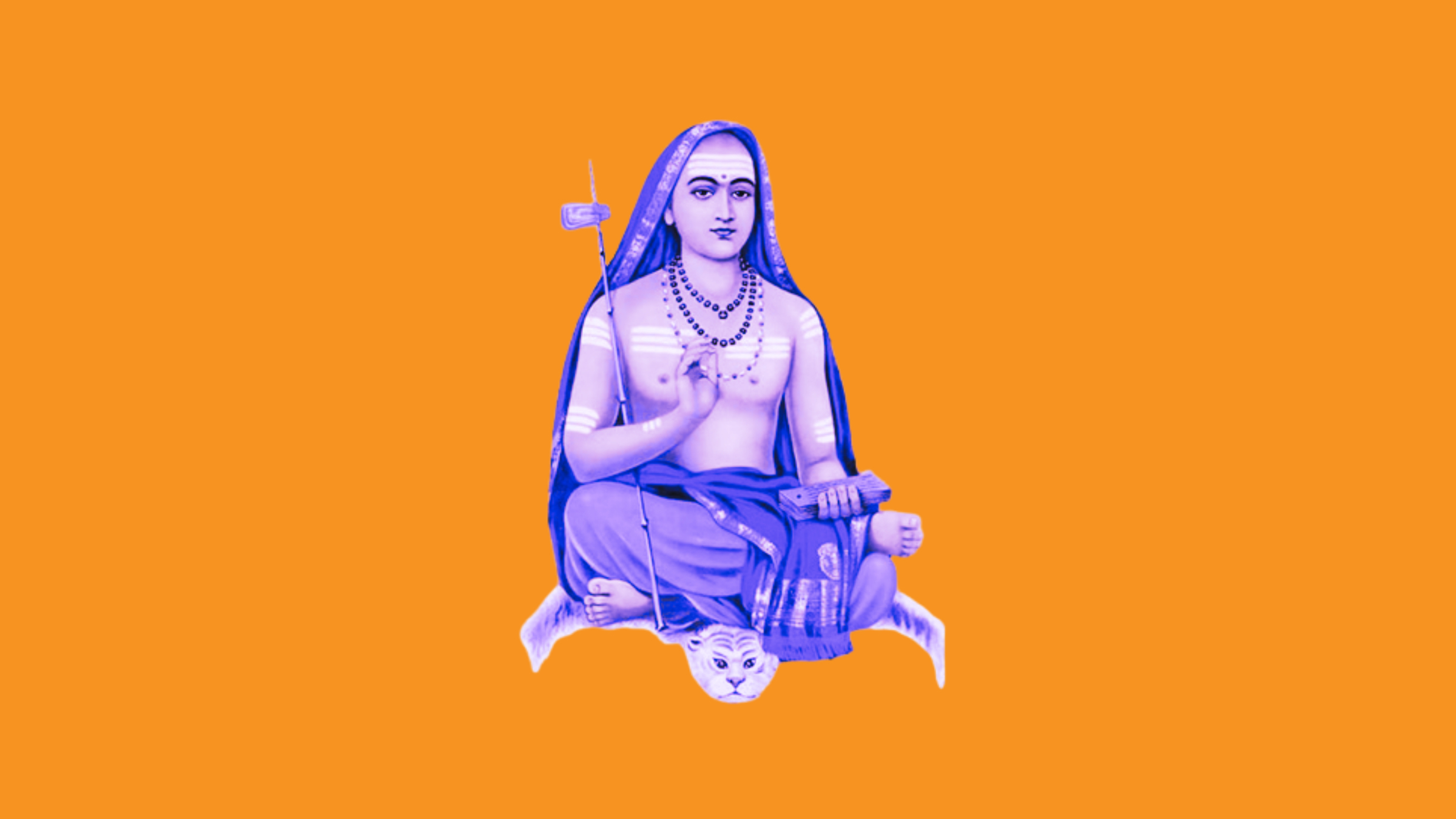Shankaracharya travelled in and through the land of Bharata for reestablishing the Vaidika Dharma which was in the verge of losing all its importance. His effort in unifying the Bharata by establishing various mathas and other centres has saved Bharata from losing its spiritual treasures.
By Dr Sampadananda Mishra Professor at Rashtram
Namaami lokashankaram
We all know revered Adi Sankarāchārya as one of the greatest philosophers of India, and is the founder of the Advaita Vedanta, one of the sub-schools of Vedanta.
Sankarāchārya was born into a Brahmin family in a village named Kaladi by river Periyar in the 8th century CA. Even as a young child he was extremely capable of retaining in his memory anything that has passed his eye once.
His guru, Sri Govinda Bhagavatapāda, imparted to him the knowledge of the deeper meanings of the Vedas and the Purānas. Under his guidance, the young boy received the knowledge of Brahma and gained expertise in the different forms of Yoga. It was on his guru’s command that Sankaracharya began spreading the essence of the Vedas and the ‘Advaita’ philosophy wherever he travelled.
In a short life span of 32 years, Sankarāchārya achieved a lot of renown as well as contributed significantly to the revival of the ‘Sanātana Dharma’ from being drowned by the different sects and beliefs that were emerging in his times. In the words of Sri Aurobindo, it was Sankarāchārya ‘…whose great spirit in the few years of its mortal life swept triumphant through India and reconstituted the whole religious life of her peoples…’.
Shankarāchārya wrote commentaries on the Brahmasutras, the ten principal Upanishads and the Bhagavadgita, Vishnusahasranama and Sanatsujatiya. His original writings are extremely beautiful and lofty. The most famous are: Atmabodha, Anandalahari, Vivekachudāmani, Jnānabodhini, Atma-Anatma Viveka, Drik-Drishya Viveka, Upadesa Sahasri and Maniratnamālā. The various stutis composed by Sri Shankaracharya are unparalleled in terms of style, diction, language, melody, sweetness, simplicity and the intensity of devotion.
“…Bharata Varsha would have ceased to be Bharata Varsha several centuries ago and would never have survived the murderous sword, the devastating fire and the religious intolerance of the successive invaders, if Sankara had not lived the life he lived and taught the lessons he taught. And those lessons are still pulsating in every cell and in every protoplasm of the true aspirant and the true Hindu.” (Swami Sivananda Saraswati, Divine Life Society)
Shankaracharya travelled in and through the land of Bharata for reestablishing the Vaidika Dharma which was in the verge of losing all its importance. His effort in unifying the Bharata by establishing various mathas and other centres has saved Bharata from losing its spiritual treasures.
Sri Shankaracharya, a Yogi, a Jnani, a Bhakta, a religious reformer, a gifted poet, has not left any branch of knowledge unexplored. Even the wisest of the wise ones of his time bowed down before the superhuman intellect of the young Shankara. He was not just an expounder of Advaita Darshana but, was a great metaphysician, a philosopher par-excellence, an infallible logician, a dynamic young personality, a stupendous moral and spiritual force, who unified Bharata of his time. His teachings will continue to shine as long as the sun shines in the sky.
To conclude, let me narrate a beautiful story which is popularly connected with Adi Shankaracharya.
Once Adi Shankaracharya was travelling with his disciples. On the way, seeing a man dragging his cow by the rope, Shankara decided to teach his disciples a lesson. He asked them pointing out to the man dragging the cow – “who is bound to whom?” A disciple said – “Obviously it is the cow who is bound to the man. The man is the owner and wherever he drags the cow she follows.” Adi Shankara took a pair of scissors from his bag and cut the rope. The cow then started running away and the man was now following the cow desperately. Adi Shankara asked his disciples again: “Now who is bound to whom? Look how desperately the cow is running away from the man, simply because the cow is not interested in the man. But the man does not want to leave it. He keeps running behind it to possess it.”
That indeed is the case with our own mind. We do not want to get rid of the unnecessary stuff in our mind. It is by losing interest in the unnecessary stuff, one can bring the mind into a state of silence. A silent mind is immensely powerful to receive the light and truth from above and execute everything rightfully. The true leaders are in possession of such a silent mind and work out things from that state.
Reference
- Complete works of Sri Shankaracharya can be found from the following site: https://archive.org/details/CompleteWorksOfSriSankaracharyaIn20Volumes1910Edition/WorksOfSriSankaracharya01-Brahmasutra1/page/n5/mode/2up
- https://incarnateword.in/cwsa/20/indian-spirituality-and-life-v#p8)

